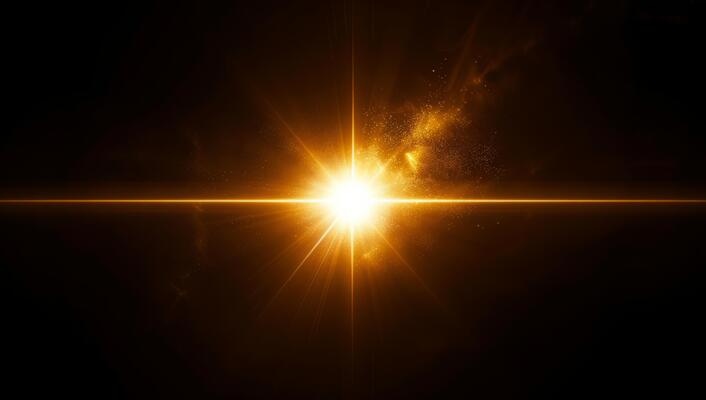Understanding Lens Flare: An Expert’s Guide to This Cinematic Phenomenon

Lens Flare is a term that often finds its way into discussions among photographers, cinematographers, and even video game designers. But what exactly is Lens and why is it both celebrated and criticized? In this article, we’ll dive deep into the fascinating world of Lens exploring its causes, its artistic use, and how to manage or enhance it in your creative projects.
What Is Lens Flare?
Lens Flare occurs when a bright light source, such as the sun or a studio lamp, directly enters a camera’s Lens and creates scattered light artifacts. This optical phenomenon can manifest as a series of bright spots, streaks, or a hazy, washed-out look that spreads across the image. While it was once considered a technical imperfection, Lens has evolved into a popular creative tool in photography and filmmaking.
How Lens Happens
At its core, Lens Flare is caused by light scattering within a Lens system. When light passes through multiple lens elements, it can reflect off surfaces inside the Lens barrel. These reflections create the characteristic artifacts associated with Lens The intensity and shape of the Lens depend on several factors, including the type of Lens its coating, and the position of the light source.
The Science Behind It
Modern Lens Flare are made up of multiple elements designed to focus light accurately onto a camera’s sensor. Despite advancements in Lens technology, some amount of internal reflection is unavoidable. Lens coatings, such as anti-reflective layers, are used to minimize these reflections, but no Lens is completely immune to Lens .
Types of Lens Flare

Lens Flare isn’t a one-size-fits-all phenomenon. Depending on the conditions and lens setup, you may encounter different types of Lens . Here are the most common:
1. Ghosting Lens Flare
This type of Lens Flare appears as a series of bright spots or shapes, often circular, that align with the light source. It’s most noticeable when the light source is positioned just outside the frame or directly in view. Ghosting Lens are more pronounced in Lens with fewer coatings.
2. Veiling Flare
Veiling Lens Flare is a more subtle effect that creates a hazy, washed-out appearance across the image. This type of Lens reduces contrast and saturation, giving photos or footage a dreamlike quality. It’s common in situations where the light source is extremely bright or fills a significant portion of the frame.
3. Starburst Effect
Although technically not a Lens Flare the starburst effect is often grouped under the same umbrella. This effect occurs when light diffracts around the edges of a Lens aperture blades, creating star-like patterns. It’s particularly noticeable in night photography or when shooting bright point sources of light.
Lens Flare in Photography and Film
Lens has a rich history in both photography and filmmaking, where it has transitioned from a flaw to a feature. Let’s explore how professionals use it to enhance their visual storytelling.
Aesthetic Appeal in Photography
In photography, Lens can add an organic, artistic touch to an image. For example, outdoor portraits often use the sun as a backlight to create a soft, golden Lens that enhances the mood. Similarly, landscape photographers use Lens to emphasize the intensity of natural light, adding depth and dimension to their shots.
Cinematic Uses in Film
Filmmakers have embraced Lens as a storytelling device. Directors like J.J. Abrams are known for using it extensively to create a sense of drama and dynamism. In science fiction films, Lens can evoke a futuristic or high-tech aesthetic, while in romantic scenes, it can add warmth and intimacy.
Examples of Iconic Lens Flare Usage
- “Star Trek” (2009): J.J. Abrams’ reboot of the franchise is famous for its heavy use of Lens to give the film a modern, space-age feel.
- “Blade Runner” (1982): The film’s dystopian visuals use controlled Lens to enhance its moody, neon-lit atmosphere.
- “Eternal Sunshine of the Spotless Mind” (2004): The soft, dreamlike Lens contribute to the film’s emotional tone.
How to Create and Control Lens Flare
Whether you want to embrace Lens as a creative tool or avoid it altogether, understanding how to control it is essential. Here’s how:
Tips for Enhancing Lens Flare
- Use Prime Lens : Prime Lens , especially vintage ones, are more prone to flare due to simpler coatings, making them ideal for creating intentional effects.
- Position the Light Source: Experiment with the angle and position of your light source. Shooting against the sun or a bright light can yield dramatic.
- Remove the Lens Hood: hoods are designed to block stray light, so removing them can increase the likelihood of Flare .
- Experiment with Filters: Filters like UV or polarizers can sometimes enhance , though they also introduce additional reflections.
Techniques for Minimizing Lens Flare
- Use a Lens Hood: A Lens Flare hood is the simplest way to block unwanted light and reduce.
- Choose Modern Lens : Lens with advanced anti-reflective coatings are better at suppressing.
- Adjust Your Composition: Reposition your camera to exclude the light source or use objects like trees or buildings to block it.
- Clean Your Lens: Dust and smudges can amplify so keep your lens spotless for better control.
Lens Flare in the Digital Era
In today’s digital world, isn’t limited to what happens in-camera. Post-processing tools allow creators to add or refine effects to achieve the desired look.
Using Editing Software
Programs like Adobe Photoshop, Lightroom, and After Effects offer Lens Flare filters that can mimic natural effects. These tools let you adjust the intensity, color, and placement of the, giving you complete creative control.
Lens Flare in Video Games
Lens Flare has also become a staple in video game design. Developers use it to simulate realism and add cinematic polish to their games. Titles like “Mass Effect” and “Halo” incorporate as part of their visual storytelling, enhancing immersion.
Conclusion: The Art and Science of Lens Flare
Lens Flare is more than just an optical anomaly; it’s a versatile tool that can elevate your visual storytelling. Whether you’re a photographer aiming for artistic impact or a filmmaker looking to set the mood, understanding opens up new avenues for creativity. With the right techniques, you can harness its power to create images and scenes that captivate and inspire.
Embrace the flare, and let your creativity shine!


